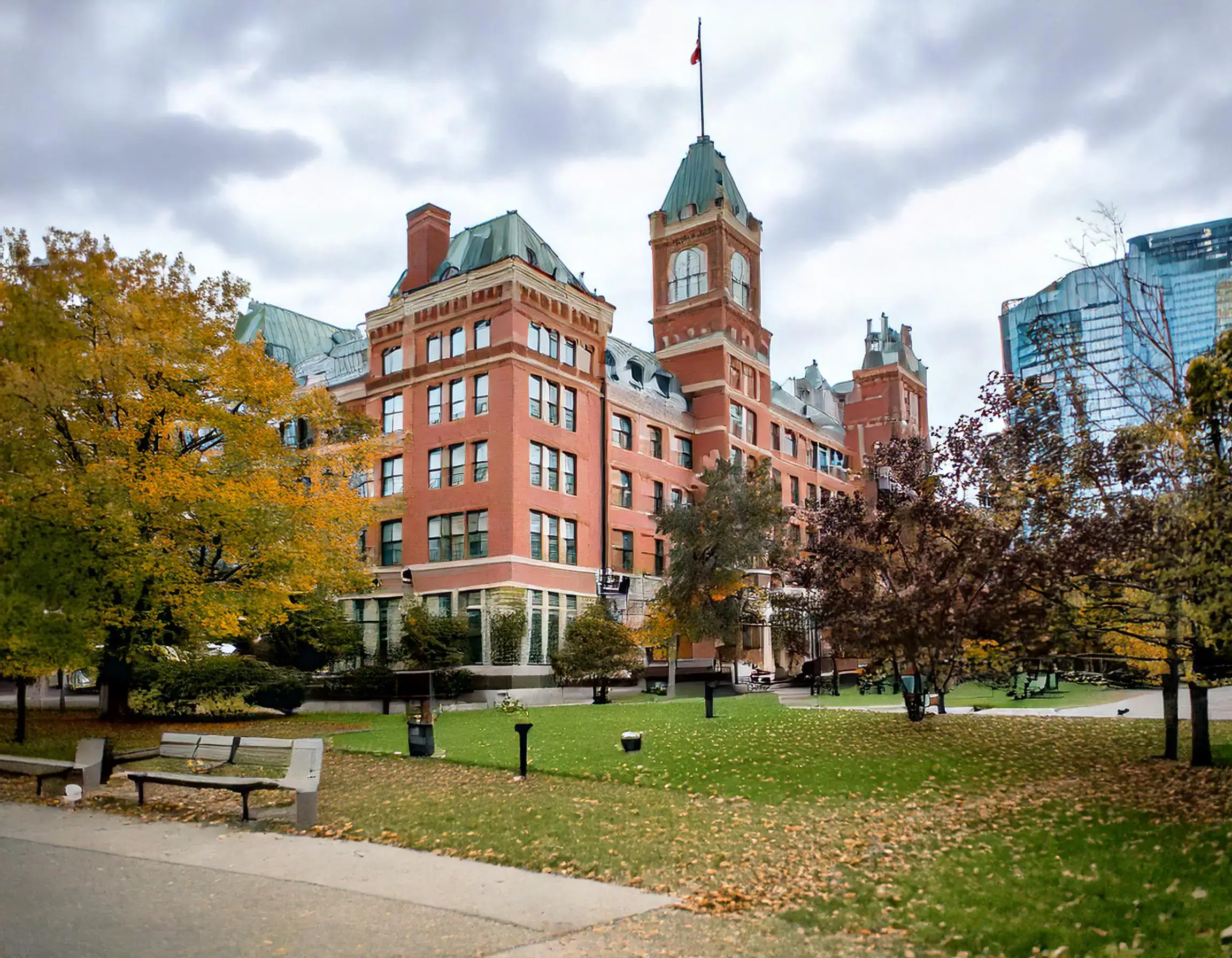What Are the New Rules?
1. Study Permit Limitations for 2024
In addition, the Canadian federal government is introducing strict new rules on study permits for international students that will take effect next year. Due to the cap on applications, this will result in about 360,000 approved study permits. That’s a whopping 35% drop from this time last year.
This recent move is an attempt to take a greater hand in controlling the flood of international students. It keeps all of our essential resources—like housing and healthcare—plentiful. Unfortunately, this cap has a lot of students scrambling to guarantee a seat.
International students are an important part of Canadian post-secondary education, comprising nearly 17% of the student body at the University of Northern British Columbia, for example. Beginning January 22, 2024, all study permit applications received by Immigration, Refugees and Citizenship Canada (IRCC) will require an attestation letter issued by a province or territory.
This stipulation is pivotal to making sure that schools are properly equipped to recruit and educate international students.
2. Updates to Post-Graduation Work Permit
Major, shock-and-awe changes are being made to PGWP eligibility. Beginning September 1, 2024, international students enrolled in educational programs associated with a curriculum licensing agreement will no longer be allowed to obtain a PGWP upon graduation.
Always verify your program’s eligibility before signing up! This amendment strengthens the Canadian government’s commitment to ensuring that education is placed above work experience. Our number one goal is to keep students focused on learning.
Simultaneously, we ask them to get meaningful work experience under their belts prior to graduating. The PGWP provides international students with a critical opportunity to gain important work experience in Canada.
That experience can be a critical stepping stone toward permanent residency. These changes, while well-intentioned, can lead to confusion and anxiety among students who depend on the PGWP for post-study work opportunities.
3. Changes in Spousal Work Permit Eligibility
Amendments have been made to the spousal work permit eligibility provisions. The intent behind these changes is to slow growth and reduce strain on schools, public safety, and other services.
Prior to this change, spouses of international students were eligible for open work permits, which would enable them to work anywhere in Canada. Unfortunately, the new rules have changed these criteria, hurting families who had already made plans to move to Canada as a unit. This change has left many families uncertain about their future and raises concerns about the potential impact on their financial stability. As they navigate these challenges, some may seek family law services in Toronto to understand their rights and options. It is essential for families to receive support and guidance during this transitional period to mitigate the adverse effects of the new regulations.
The story of how these changes came about has not been completely told yet. They are set to change the way spousal permits are issued, thereby changing the calculus for international students and their families.
4. Increased Financial Requirements
Indeed, financial prerequisites for overseas pupils have experienced an 82% increase under the new regulations. Students must now demonstrate sufficient funds to cover tuition, living expenses, and return transportation, ensuring they can sustain themselves without undue reliance on Canadian resources.
This increase is part of making sure students experience greater economic security. In doing so, it will benefit citizens and the economy. Anyone considering a degree needs to be thoughtful about their finances.
Applicants should take these new and increased requirements into account as they apply.
5. Adjustments in Guaranteed Investment Certificate
The second major change has been to the Guaranteed Investment Certificate (GIC) requirements. This amendment specifically impacts the Student Direct Stream (SDS).
We also expect these changes to simplify the financial verification process. Therefore, money will be easily available to cover the student’s entire period in Canada.
The focus on a GIC is to ensure that students have guaranteed immediate access to funds for their cost of attendance. This requirement enhances economic preparedness.
It’s a crucial element of the application process for international students looking to study in Canada.
Impacts on Permanent Residency Pathways
Pathway Opportunities for Students
Education and work experience have been seen, by both Canadian employers and international students, as a clear pathway to permanent residency. Additionally, with the subsequent introduction of the Post-Graduation Work Permit (PGWP), international students have the opportunity to stay in Canada and gain valuable Canadian work experience. This experience can be a highly determinative factor in qualifying under the requirements for many different immigration pathways.
For many, this path seemed straightforward: study, work, and then apply for permanent residency. Recent changes have derailed this pipeline, leaving many students in limbo. Now, the federal government has chosen to limit international student growth.
It will also cease issuance of Post-Graduation Work Permits (PGWPs) to students coming from specific institutions — a further layer of unpredictability. Students who picked Canada under the promise of a future permanent residency are left having to reconsider their decisions. In a statement, the Naujawan Support Network cautioned that major policy changes are needed urgently.
In their absence, as many as 70,000 PGWP holders will need to exit Canada during 2024 and 2025. This situation highlights the importance of direct, clear, and reliable residency routes.
Challenges in Achieving Residency
The path to permanent residency for international students is riddled with obstacles. Despite having lived, studied, and worked in Canada, many find doors closed to them due to the absence of a clearly defined pathway within the international student program. Specific policy tweaks have been proposed, but advocates say these don’t go far enough to meet the urgent needs posed by PGWPs that are set to expire.
The reality is stark: many students with expiring permits have limited options to remain in Canada. Additionally, the permanent residency pathway has become increasingly opaque, complicating the situation for those who believed that obtaining a Canadian education would seamlessly transition into residency.
The stress and confusion stemming from the lack of clear pathways is massive. Furthermore, the promise of a smooth transition from student to resident has disappeared, leaving hundreds wondering where they will be able to call home in Canada.
Challenges and Strategic Adjustments
Navigating Financial Hurdles
Financial barriers are a major issue for many international students in Canada, largely because of outdated cost-of-living requirements. In the early 2000s, the threshold for a single applicant was only $10,000. This number does not even come close to matching what it actually costs to live these days.
This gap can pull students deeper into debt as they try to pay for rent, groceries, and other basic needs. Adequate housing is also an immediate concern. Students continue to face significant challenges in securing affordable, conducive housing.
The Canadian federal government has responded to these challenges. They’ve also released a new excellence framework to shine a light on those educational institutions that provide the best all-around services, including housing assistance. By incentivizing institutions to offer better services, the government hopes to foster a more welcoming environment for international students.
Adapting to Permit Limitations
The Canadian government will impose caps on the number of study permits it issues for programs with high enrolment rates. Making the impact of this change felt in students’ decisions about which programs to apply for will require some strategic planning.
The Last In First Out policy has been introduced. Stricter guidelines on Post-Graduation Work Permit (PGWP) eligibility have arrived. It is incumbent upon students to choose the right institutions and programs that are eligible.
These limitations force students to balance their educational opportunities with their professional dreams within Canada. For example, students who want a career in technology or healthcare fields can find options with higher barriers to entry but better job outlooks.
Know the limitations of these permits. Their understanding will make all the difference on whether students are able to remain and work in Canada after graduation.
Strategies for Residency Success
For international students hoping to become permanent residents, navigating the Canadian immigration landscape is essential. The Government also very clearly places a premium on in-Canada experience. Understanding the various pathways to residency, such as Express Entry and Provincial Nominee Programs, can be daunting. Many students find it beneficial to seek assistance from professionals, and immigration attorney services in Toronto can provide valuable guidance throughout the application process. By leveraging expertise in this area, aspiring permanent residents can enhance their chances of successfully navigating the complex immigration regulations.
In 2025, they propose to set aside 40% of new permanent resident spaces for existing temporary residents. This policy also highlights the value of obtaining Canadian work experience while studying.
Yet, looking for a job is still hard, with 1.5 million unemployed at the time of writing in August 2024. In order to best position themselves to receive residency, students must work in roles that help fill gaps in Canada’s labor market.
In addition, achieving certain Canadian Language Benchmark (CLB) scores is a requirement. As of November 1, university graduates are required to have a CLB of 7 and college graduates a CLB of 5.
These language requirements are a clear indication of how valuable communication skills are to the Canadian labor market. If implemented in tandem, these policies can improve students’ chances of making a successful transition from temporary to permanent residency.
Provincial Responses to New Regulations
Ontario’s Approach to Changes
Ontario’s response to the new immigration rules for international students focuses on adapting to the federal mandates while supporting its diverse educational institutions. The province has been pursuing a proactive line of engagement with IRCC through a memorandum of understanding (MOUs). This new agreement sets minimum, common standards for Designated Learning Institutions (DLIs) for the treatment of international students.
By adopting such standards, Ontario is making a commitment to the high quality of education and support that’s provided to institutions. Phase 2 makes some key changes. A major priority has been keeping enrollments of international students under the Program Allocation Limits (PAL) ceiling.
Moreover, Ontario institutions have a responsibility not to exceed their ability to provide quality education and support services. This requirement further ensures Ontario maintains its high standards. It guarantees that our students, both at home and abroad, receive the highest quality education.
The University of Toronto is currently taking an aggressive look at its enrollment strategies. Many other top schools are also following their lead to get into compliance with the new standards. Additionally, Ontario is getting ready to meet the added administrative burden of the regulations being proposed.
DLIs will be required to report publicly on their efforts and be held to stricter operational standards. These rules are aimed at cutting the “bad actors” out of the for-profit post-secondary education sector. Institutions found to be out of compliance will be subject to penalties such as being added to the public suspension list or severe penalties including losing accreditation.
The University of Ottawa, for example, has begun introducing tighter internal audits to prevent this sort of misallocation.
British Columbia’s Response
British Columbia, smartly, is already getting in front of the federal changes by rolling out new supports for international students. Going forward, the province is prioritizing ensuring compliance with IRCC’s standards and imposing penalties for non-compliance. This framework also safeguards the quality and integrity of our educational institutions.
It holds them accountable to make sure they are achieving the highest standards. Another important element of this response is the BC Ministry’s commitment to enforce compliance with the new regulations. Institutions must manage student enrollment within the PAL cap allocation, ensuring their capacity to provide adequate support services is not exceeded.
The University of British Columbia, for instance, is investing in its student support infrastructure to make these transitions seamless. International students need to submit an entirely new study permit application to change their DLI. This funding requirement is a key provision to understand.
This federal regulation is meant to keep students in line with federal regulations and assists institutions in keeping accurate and up-to-date enrollment records. BC institutions are getting ready to help students navigate this process by providing the guidance and resources necessary to make this transition as seamless as possible.
The recommended regulations require DLIs to be more transparent about their activities and subject themselves to greater oversight. For the non-compliant institutions, they risk being suspended for up to 12 consecutive months. Such a suspension can be devastating to their reputation and result in a loss of students enrolled coming in the door.
In order to prevent these outcomes, many institutions, including Simon Fraser University, have started adopting robust compliance programs and establishing ongoing monitoring.
Effects on Canadian Institutions
Institutional Adaptations to New Rules
Now, Canadian universities and colleges are adjusting to the latest immigration regulations, making them more responsive and competitive in the process. These institutions are at a profound financial precipice. International students, who usually pay the full cost of tuition, subsidize various departments and student services.
The decline in the overall number of students is forcing colleges to reassess their approach to recruiting students and budgeting for the future. For instance, three Ontario colleges have recently suffered reduced enrollment by international students as a result of a backlog in processing study permits. This plight underscores the need for institutions to make admissions easier or find alternative sources of revenue.
The new rules also require significant shifts in what academics and support services are offered. With fewer international students, some programs will inevitably have to close, resulting in layoffs and a curtailment of services. This has the potential to be devastating for the independent, or private, college sector.
A decreased supply of graduates will be detrimental to local businesses that rely on this vital workforce. Institutions will be incentivized to compete for an ever-smaller pool of domestic students. Additionally, they will pursue collaborations with foreign educational institutions to address these challenges.
Long-Term Institutional Impacts
The impact of these immigration rules on Canadian institutions in the long-term is deep, particularly for universities in regions like Atlantic Canada. These institutions rely heavily on international student tuition for their very existence, with fully three in ten students coming from overseas. Increased financial constraints threaten access to higher education for students from low-income nations, and by 2025, the cap on international student admissions will decrease by 10 percent to 437,000, tightening the economic landscape for these institutions even further.
The economic impact of international students is significant. Together with their paid tuition, these students enhance their economic influence on local communities by spending money, creating a positive ripple effect. As graduate students face declining enrollment, institutions may need to reduce programs and services, which could devalue the educational experience and tarnish their reputations.
However, it’s not all doom and gloom; this situation also presents a unique opportunity for Canadian colleges and universities to innovate and rethink their current models. They can continue to compete in the global education space by creating online courses and adapting their curricula to meet the needs of incoming students.
Additionally, building global partnerships and enhancing domestic recruitment efforts will enable these institutions to achieve more of their goals. By exploring new student visa options and pathways for international graduates, they can attract a diverse international student population.
In conclusion, while challenges exist, Canadian academic institutions have the potential to thrive by being adaptable and proactive in their strategies to engage with the international student system. By focusing on innovative solutions, they can ensure a sustainable future in the ever-changing landscape of education.
Future Prospects for International Students
Opportunities in Canadian Education
The negative and positive impacts of the new international student program immigration rules in Canada are significant, ongoing, and important to address. With the overall number of student visas decreasing, competition for admission to Canadian Designated Learning Institutions (DLIs) has become more intense. This trend is particularly striking in provinces such as Ontario, British Columbia, and Nova Scotia.
This shift has heightened the importance for hopeful international students to strengthen their applications to stand out in the competitive landscape. Although permits are down, a quality education remains a strong magnet for students. They have the chance to engage with some of the best teachers and research institutions in the world, enriching their academic experience.
Perhaps the biggest draw for international students is the opportunity to work off-campus. Full-time work is also supported during academic breaks, such as summer or winter holidays. This experience deepens their professional development while also offering critical income relief, essential for managing living costs.
However, beginning in Fall 2024, graduate students will also be allowed to work part-time during the school term, up to 24 hours per week. This flexibility not only allows them to earn practical skills but also alleviates the financial burden of living and studying in Canada.
Long-Term Policy Consequences
This new cap on study permits, resulting in around 360,000 approvals, represents a 35% reduction from 2023. This policy is just one component of an overall strategy to protect the long-term sustainability of the international student system. This new effort helps to shield students from being taken advantage of by bad actors in the space.
It sets the bar high on education and compliance. IRCC has been collaborating with designated learning institutions (DLIs) since 2015 to improve the reporting of non-compliant students. Jointly, they are creating a strong, open, public process.
Along with the obstacles, the changes present new opportunities to make things better. By having fewer study permits, colleges and universities will be better able to provide richer resources and more robust support to the international student population they do take on.
This would lead to improved quality learning and teaching, and more comprehensive student assistance programs. Since December 2023, we have accepted almost 529,000 LOAs. This multi-layered verification process underscores the importance we place on ensuring quality and integrity in the admission process.




